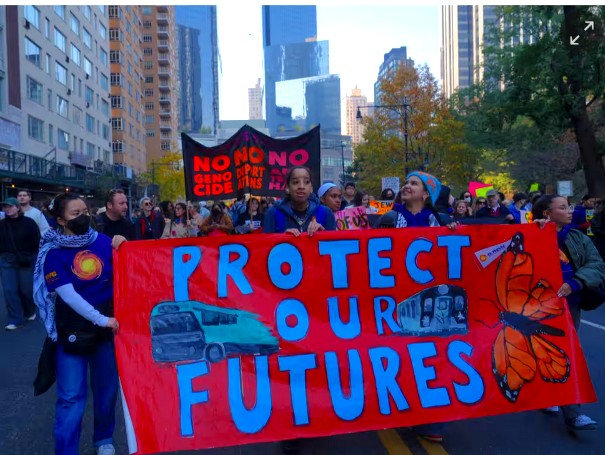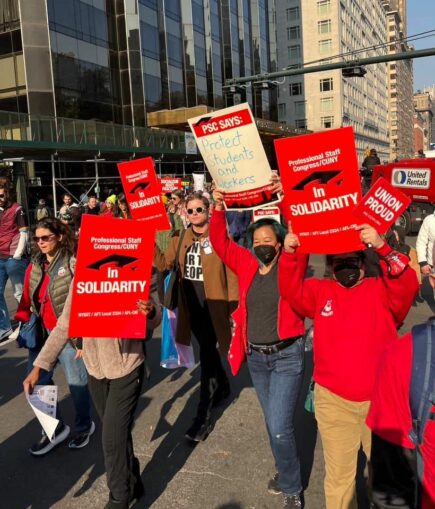Nov. 9 actions protest Trump’s reactionary program
People quickly mobilized throughout the United States to protest Republican Donald Trump’s election. Demonstrations, most of them on Nov. 9, were held in Seattle, Chicago, Philadelphia, Washington, D. C., Berkeley, California, and perhaps the biggest in New York City.

Anti-Trump march, New York City, Nov. 9, 2024. Photo: Make the Road
The protests defended reproductive rights and protested Trump’s xenophobic immigration policies, such as his plan to order mass deportations and his ban on immigrants from Muslim countries. Also, they demanded the government cancel student debt, protect the environment, raise the minimum wage and affirm the rights to organize unions and to bargain collectively.
Besides the street protests, unions issued statements responding to the challenges of Trump 2.0. The AFL-CIO wrote, “Now we are faced with the reality of a second Donald Trump term. The Project 2025 agenda promises to dismantle labor unions.” The federation goes on to say that “labor’s task will be to defend working people.” (aflcio.org, Nov. 6)
The AFL-CIO statement explains, “It is clear that the economic struggle working-class people are facing is causing real pain, and neither party has sufficiently addressed it.”
The American Federation of Teachers said: “Our guiding principle will be to continue to do the work to improve people’s lives: to fight for our children’s future.” (aft.org, Nov. 6) Trump plans programs that put AFT members in the administration’s crosshairs twice — most are public employees, a particular target of the MAGA movement, and educators, another target.
The context of these statements is that most of the organized labor movement mobilized time and funds for the election of the Democrats, and this effort failed. For example, union members knocked on a million doors in Pennsylvania and lost the state. Labor spent $47 million, engaged in phone banks, canvassing operations, education and persuasion efforts with their members and outreach to nonunion working-class households to no avail. (opensecrets.org)
These statements analyze the current political situation from the labor movement’s perspective but contain no call to action.
Professional Staff Congress, NYC

Professional Staff Congress in anti-Trump march, New York City, Nov. 9, 2024. Photo: PSC/CUNY
AFT Local 2334, also known as the Professional Staff Congress (PSC), which represents 30,000 full-time and adjunct professors, librarians, laboratory assistants and some technical staff at the City University of New York, made an analysis of the dangers the victory of Donald Trump represents for the New York City working class.
Union President James Davis said in a message to PSC members: “It is a wake-up call for organized labor that Trump’s movement has effectively harnessed such broad support of working people and the poor. … [Trump] and his acolytes aim not only to discredit and defund educational institutions but also to undermine the values and principles on which the public education system is built.” (psc-cuny.org, Nov. 6)
The PSC not only issued a statement, it joined a march of 5,000 protesters on the Trump International Hotel with a coalition of community groups, including Make the Road (Se Hace Camino Nueva York), the Working Families Party, Jews for Justice, other unions and other groups. The protesters are part of “Protect Our Future,” a coalition in formation.
The PSC is also actively fighting for a contract with picket lines and civil disobedience at CUNY board meetings. The union’s old contract expired in early 2023.

